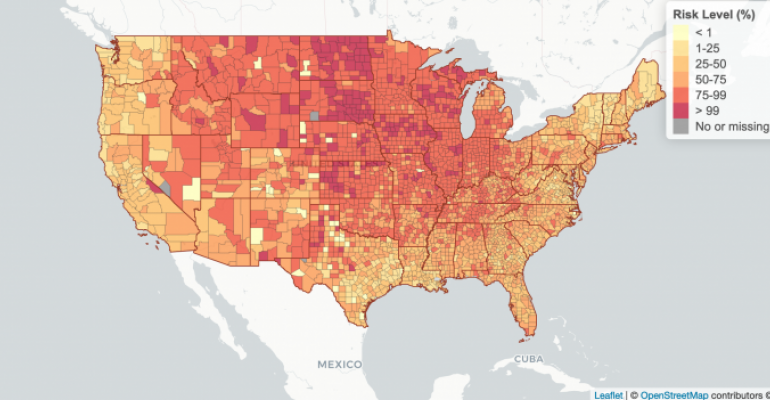At this point in mid-November, Covid-19 is surging. But how risky is it really to hold a small in-person event? That is the question that researchers at the Georgia Institute of Technology set out to answer when they created their Covid-19 Event Risk Assessment Planning Tool.
What they designed is a free, interactive map that provides the current risk level for each county in the U.S., based on the size of a group. The risk level is “the estimated chance, from 0 percent to 100 percent, that at least one Covid-positive individual will be present at an event in a county, based on the given size.”
So, on Thursday, November 12, the tool is reporting that a 50-person meeting in DeKalb County, Ga., home to parts of Atlanta, has a risk level of 49 percent. That means there’s about a fifty-fifty chance that at least one person at the event will be infected with coronavirus. In Chicago (part of Cook County, Ill.), the risk level for a 50-person meeting is 92 percent, while Santa Barbara County in Southern California is just 19 percent. If you bump up the size of the in-person meeting to 100 people, your risk level in Chicago is 99 percent and in Santa Barbara County 34 percent.
For meeting planners who typically bring together attendees from multiple regions, the tool has its limits since it reports on the virus within a county. It can’t take into consideration all the places your attendees are arriving from—but it’s still a useful assessment of risk as attendees move through the airport or have a drink at the lobby bar. It also doesn’t take into consideration how well people are following precautions like wearing masks and social distancing.
In an article in the Los Angeles Times, co-creator of the tool Clio Andris explained: “In a way it’s like a weather map. It can tell you what the risk is that it will rain, but it can’t tell you if you’ll get wet. That depends on if you carry an umbrella, or if you choose not to go outside at all.”





